THE Gold Coast has had many defining moments through its history, from the creation of the city’s towers, theme parks and waterways to the disasters, scandals and sad days.
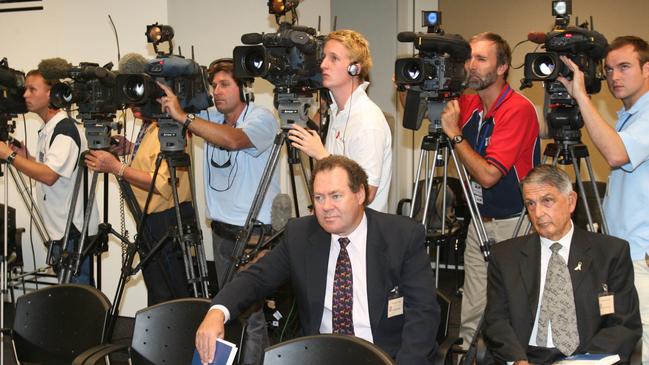
THE Gold Coast has been no stranger to political controversy, with everything from the council being dismissed to MPs performing the chicken dance.
During the 1970s the Gold Coast City Council was the scene of increasingly volatile relations between the Coast’s leaders, during which their meetings would often descend into shouting arguments.
The mayor of the day, Sir Bruce Small, even snapped his own gavel while trying to keep his 10 fellow colleagues under control.
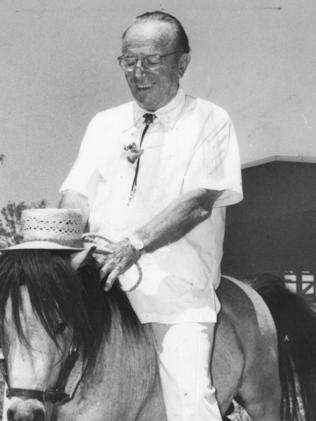
It all came to a head on Tuesday, February 28, 1978, when the ruling Country Party state Cabinet, led by Premier Sir Joh Bjelke-Petersen, sacked the Gold Coast City Council and appointed an administrator, John Andrews.
Various small controversies continued through the 1980s and 1990s until the 2004 election which became the subject of an inquiry by the Crime and Misconduct Commission (CMC)
It became clear business leaders and some councillors had formed a prodevelopment
alliance, dubbed the “bloc”.
A dossier detailing alleged misconduct at the Gold Coast City Council was given to Local Government Minister Desley Boyle, who referred the material to the Crime and Misconduct Commission.
The lengthy dossier, compiled by Cr Peter Young, sparked heated confrontation and threats of legal action at a council meeting.
Public hearings were held through late 2005 and early 2006 before the CMC’s report was delivered in May that year.
No charges were ultimately laid.
The Railway, January 24, 1889 — How we first became connected to the outside world
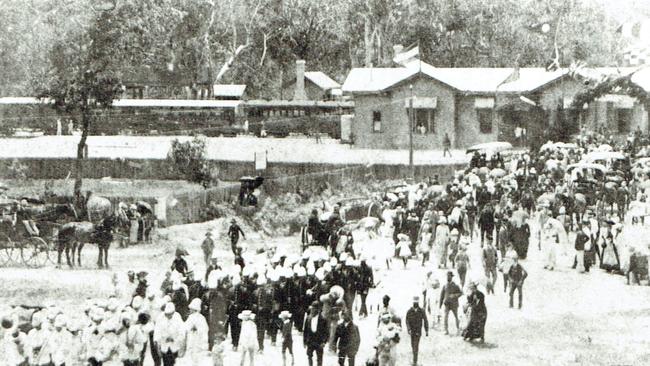
THE opening of the railway which connected Southport with Brisbane was hailed as a major day for the Gold Coast.
At the time the Bulletin recorded the significance of the rail line as forming “another link in the far-reaching chain of communications which binds all the Australian colonies together”
“It is no exaggeration to say that it far exceeded the most sanguine anticipation that had been indulged in ... We heard with great surprise that the visitors from Beaudesert, although holding the free excursion tickets issued by the Government, were charged with the usual fare to Bethania which amounted to a breach of faith.”
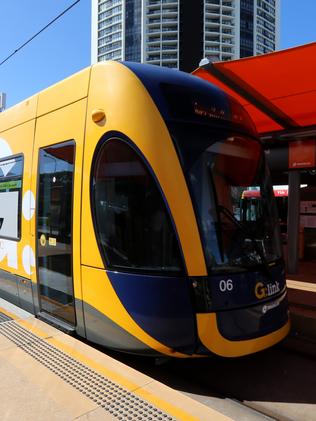
The first train’s arrival was a moment of great pomp and gusto.
A local band and Volunteer Defence Corp escorted visitors and dignitaries along the dusty Scarborough Street in a parade from the station following its opening.
By the mid-20th Century the train services were being wound down, with Coomera station closing in 1955 and Coolangatta soon after.
In 1964, Albert Shire Council chairman Russ Hinze called on the State Government to close the Southport-Beenleigh railway link as an alternative to paying for its upgrade.
The future South Coast MP and “Minister for Everything”, took his concerns directly to Premier Frank Nicklin and its fate was quickly sealed.
Mr Nicklin held a meeting of concerned stakeholders in Brisbane at which he asked those present to raise their hands if they had come to the meeting by train and he found within seconds that none had.
Following the closure there was a decades-long push to revive the railway before the Goss Government announced plans to rebuild the line south from Beenleigh to the Gold Coast again.
The new stations began opening through the late 1990s, with the Varsity Lakes heavy rail facility taking its first passengers in 2009.
The city’s rail infrastructure also gained the Gold Coast light rail in 2014 which soon proved popular beyond the wildest dreams of its operator, GoldLinQ.
The second stage of the light rail is due to open in early 2018.
Floods, 1974 — Our great natural disaster
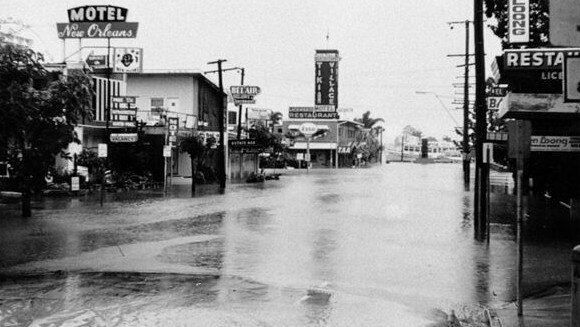
THE Gold Coast bore the brunt of nature’s fury in 1974 when Tropical Cyclone Wanda hit, flooding 1500 homes.
More than 1250mm of rain fell on the Hinterland and the streets of Surfers Paradise. When the Nerang River broke its banks, floodwaters rose waist-high.
Brisbane was flooded after more than 314mm of rain fell, the wettest day in the state’s capital since 1887. On the Coast, the canals overflowed and the Nerang River rose, sending the waters flowing into the Glitter Strip’s streets.
More than 2000 people were evacuated as water filled Cavill Ave and other major roads.

The Gold Coast avoided another major round of damage until January 2013 when Tropical Cyclone Oswald arrived.
Over the four-day period covering the Australia Day long weekend, Springbrook took in 1453mm of rain, the highest of any location in the state.
The Gold Coast’s beaches were devastated, with significant erosion up and down the coastline.
While the storm soon passed, the compensation battle for state government disaster relief money began.
Jupiters Casino
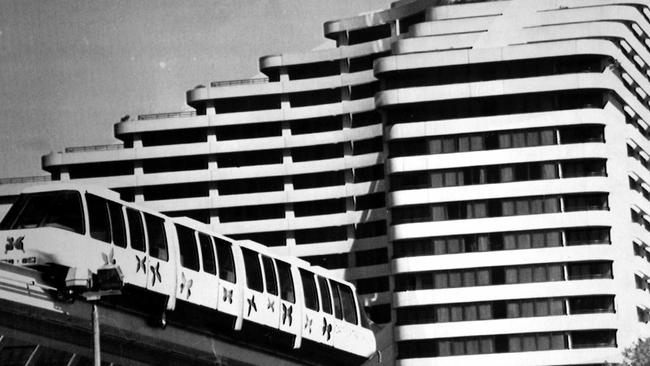
MORE than three years of arguments and development came to an end when Conrad Jupiters Casino opened in late 1985. An early punter ready to play the slots was then-South Coast MP Russ Hinze, the famous “Minister for Everything’’ who had backed the project since its inception.
Following this opening, the casino’s 450 croupiers were assessed for their performance before real money was introduced on its first day of operation, during which more than 10,000 people flooded through its doors.

Casino chairman Sir Roderick Proctor officially declared the building open by cutting a crimson ribbon stretched between two massive gold entrance pillars.
First through the door was Roy Siffler who was seen by media sprinting on to the betting floor, eager to place an early and lucky punt.
However, despite it being opening day, casino bosses took no chance and turned away customers who were not dressed properly.
Broadbeach resident Mervin Matheson was among those turned away in the opening minutes based on his “walk shorts” and long socks which he was told were inappropriate while his son Wayne was barred for wearing gym shoes.
Ultimately 30,000 people visited during its first weekend of operation, with its early turnover reaching well into the millions.
The casino proved highly popular but also controversial, with religious figures warning it would have a dangerous impact on the city.
Tamborine disaster — the Gold Coast’s darkest day

WHAT started out as a day trip up Tamborine Mountain turned into, at the time, Queensland’s worst bus disaster.
The bus, from Tweed Heads, slipped over an embankment near King Parrot Court as the driver attempted to navigate a corner, killing 11 passengers and injuring 38 others..
Survivors described the horror of being thrown around the bus as it plunged 50m down the mountainside.
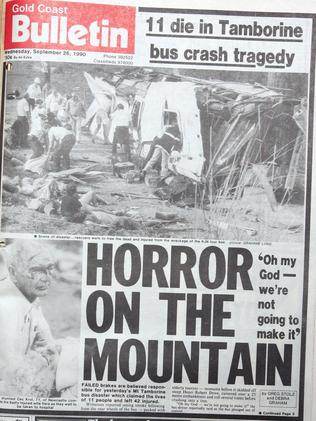
It was followed just six months later by what was then Australia’s worst helicopter crash.
On March 3, 1991, a Sea World helicopter crashed on South Stradbroke Island while on a joy-flight, killing seven people.
The accident claimed the lives of Marlene Luton, son Malcolm, daughters Corrina and Donna and son-in-law Kim Barnes, all of Musgrave Hill, Southport, as well as family friend Jean-Christophe Couvreaux, 22, of France.
A Bureau of Air Safety report found that pilot Glenn Wells suffered from a heart condition that could have caused a loss of consciousness or sudden death.
More recently, three people died in two separate crashes of historic Tiger Moth planes, in late 2013 and in 2015.
Pilot Alex “Jimmy” Rae and passenger Taissia Umenc were killed in December 2013 when the Tiger Moth they were in crashed into the ocean off South Stradbroke Island.
On December 28, 2015, Coutts Crossing resident Gary Turnbull died after the Tiger Moth he was a passenger in crashed at Pimpama.
Kinkabool — the first Gold Coast high-rise
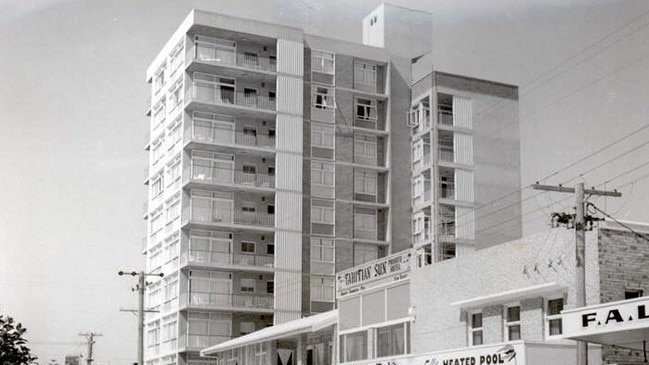
IT’S hard to believe that a 10-storey building in Surfers Paradise was described as a “giant” but by the time Kinkabool was finished in 1960, it was the Q1 of the city. Kinkabool had 34 units or flats, as well as two penthouse suites on the 10th floor and was the Coast’s first high-rise.
The Bulletin followed its progress as it became an instant landmark.
It is the only building of its era still standing.

In 1963, after only four years of holding the title, Kinkabool was replaced by The Sands as the Coast’s tallest building at 11 storeys.
The National Trust has recognised Kinkabool since 1994 as historically significant because it was the first high-rise apartment building on what was then known as the South Coast.
Kinkabool was the first of what became one of the city’s features, its famous high-rises culminated in the 78-storey Q1 tower in 2005 which became the tallest residential tower in the southern hemisphere.
In recent years the Gold Coast has become a major development hub as billions of dollars worth of high-rises have been proposed.
In September the Bulletin revealed around $8 billion of development across more than 30 projects was on the council’s books.
Around $4 billion, or half of this, is already under construction between Southport and Mermaid Beach, including the $1.1 billion Jewel, $1.1 billion Spirit, the $870 million first stage of Jupiters Casino’s expansion and the first of the four-tower, $1 billion Ruby.
All are due for completion by 2020, with more up for approval or preparing for construction.
Among those already under construction is the $1.2 billion Spirit tower in central Surfers Paradise on the site of the former Iluka hotel.
It will reach 89 storeys and tower over the Q1.
The Ballroom Blitz — The bikies

THE rivalries between bikie clubs such as the Finks and Hells Angels grew in intensity through the early 2000s until the Gold Coast became an emotional tinderbox which exploded in 2006.
On March 18, the incident which became known as the “Ballroom Blitz” happened at Royal Pines Resort when the Hells Angels and Finks went head-to-head during a kickboxing match.
The fight was supposed to be in the ring but the battle raged across the room in front of an 1800-strong crowd, sparking fears of a bikie war.
The war never came but there were a series of violent incidents, including the 2012 Robina Town Centre shooting.
Finally, the 2013 Broadbeach Brawl sparked a major crackdown from the Newman government and the controversial VLAD laws.
Magic Mountain and the birth of the theme parks
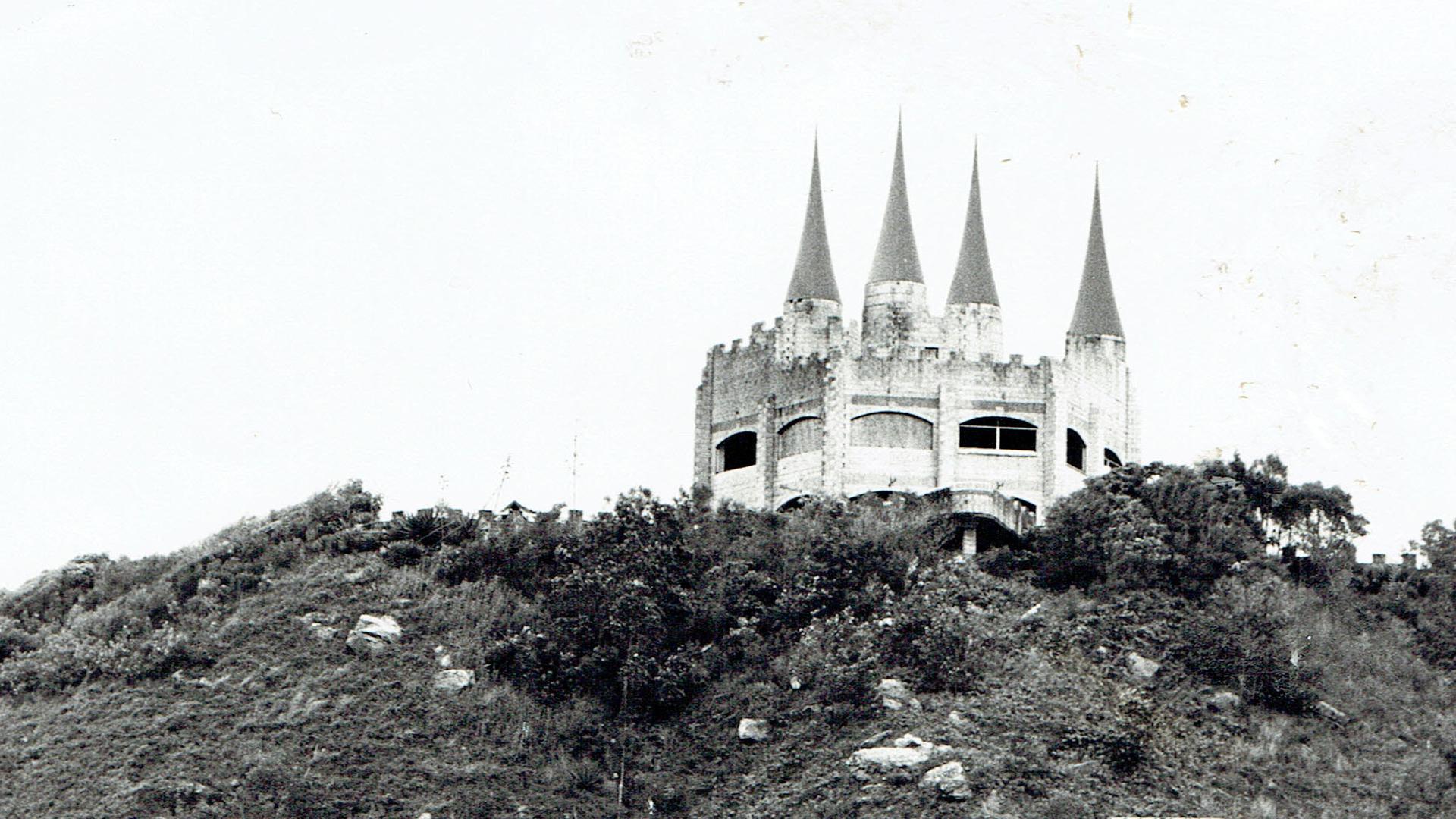
THEME parks are a big part of the Gold Coast’s tourism market but this wasn’t always the case.
The first local theme park was Nobby Beach’s famous Magic Mountain which opened in 1962 as a chairlift and became a castle-themed attraction in the mid-1970s.
For Gold Coast residents of the 1980s and early 1990s, few memories are as fond as those of spending time at Surfers Paradise’s Grundy’s Entertainment Centre which opened in the Paradise Centre in March 1981.
The same year, Dreamworld was opened by Premier Sir Joh Bjelke-Petersen after more than seven years of work since local John Longhurst bought the 85ha parcel of land at Upper Coomera.
The park opened with such attractions as the IMAX Theatre, a Baldwin locomotive, Model T Fords, Rocky Hollow log ride, Australian koala theatre and the Captain Sturt paddle-wheeler.
Its first major attraction, the Thunderbolt rollercoaster, opened a year later and was eventually followed by the Gold Rush Country on the park’s fifth anniversary in 1986.
Magic Mountain closed its doors for the first time in 1987 and its famous chairlift was moved to Dreamworld the same year.
Mr Carrett sold the park in 1982 and it underwent a $13.6 million redevelopment to create a large theme park.
It closed for good in 1991.
In 1995, the remains of the park, excluding the chairlift towers were demolished to make way for a luxury resort.
Fairlie Arrow and the Gold Coast’s famous love of lurid crime

DESPERATE for fame, Fairlie Arrow made headlines when she faked her own abduction.
The mother-of-two was found blindfolded and bound at Mudgeeraba.
Ms Arrow, then-27, described as ludicrous suggestions that “the most frightening experience of my life’’ was designed to boost plans for a commercial neighbourhood watch security company.
Only hours after her release, Ms Arrow told police and reporters she was convinced the demented and infatuated fan had planned to kill her.

Ms Arrow said she was upset with numerous friends who had telephoned to ask if she had “made the whole thing up”.
“Trust me. This is not a bad publicity stunt,” she said.
“I can think of a lot of easier ways to run a publicity stunt than this.
“It’s pretty hard for me to comprehend what’s happened as well for so long I tried to do something about it and now finally everyone is taking it seriously.”
It took less than a week for Arrow to admit she was a fake.
She was fined $5000 and hit with $18,500 in costs. She later posed for Penthouse.
The White Shoe Brigade
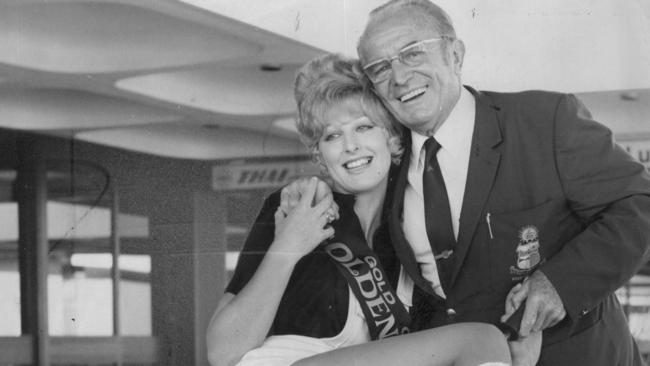
THE so-called “white shoe brigade” of businessmen, developers and political leaders were often the subject of controversy but played a significant role in the creation of the modern Gold Coast in the 1970s, 1970s and 1980s.
The major figures of the time include Sea World creator Keith Williams, Mayor and property developer Sir Bruce Small, Jock McIlwain who helped create not just a popular theme park but the city’s canal estates, Chevron Island, Isle of Capri and Sorrento.
Williams created the city’s first motorsports precinct — the Surfers Paradise International Raceway on the bank of the Nerang River in 1957.
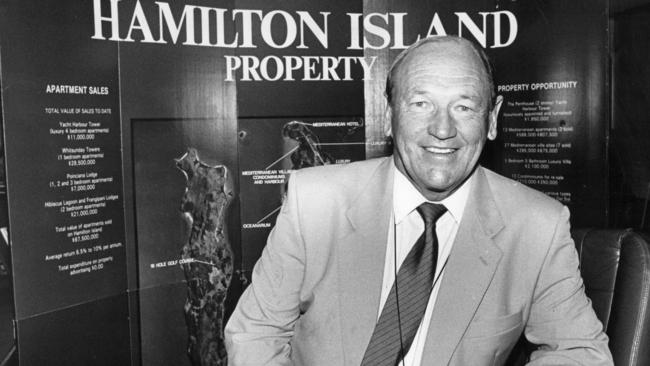
He bought a Carrara dairy farm to host his famed waterski show and after two years decided to convert the site to a raceway but was unable to gain finance for the proposal until 1965 when the first designs were drawn up.
The first drag race was held on April 10, 1966 over that year’s Easter long weekend, while the first race meet at the 3.2km track was held weeks later on May 22, 1966.
Mr Williams told the Gold Coast Bulletin in a 2009 interview he spent more than $50,000 to buy the site.
“It was just a cow paddock when I first saw it and it was totally empty,” he said two years before his 2011 death.
“At one point Jackie Stewart (F1 legend The Flying Scot) came out here and raced on the track and we have been friends ever since and still catch up each year.
“It was a great track and anyone who understood motor racing thought it was the best in Australia.”
Mr Williams later took the raceway concept across Australia before selling the Carrara complex in 1984.
The Meter Maids

The Meter Maids were founded in 1965 by entrepreneur Bernie Elsie after the Gold Coast City Council introduced parking meters to central Surfers Paradise.
Over the years the service has been used to promote the Gold Coast across Australia and the world, including a famous trip to Melbourne with Mayor Sir Bruce Small in 1967.
It has even survived the removal of traditional coin-operated parking meters and the introduction of hi-tech digital machines.
The Meter Maid tours helped spread the word about the Gold Coast’s beaches and was one of the early innovative tourism measures which continue today.
Cavill’s hotel and the creation of Surfers Paradise
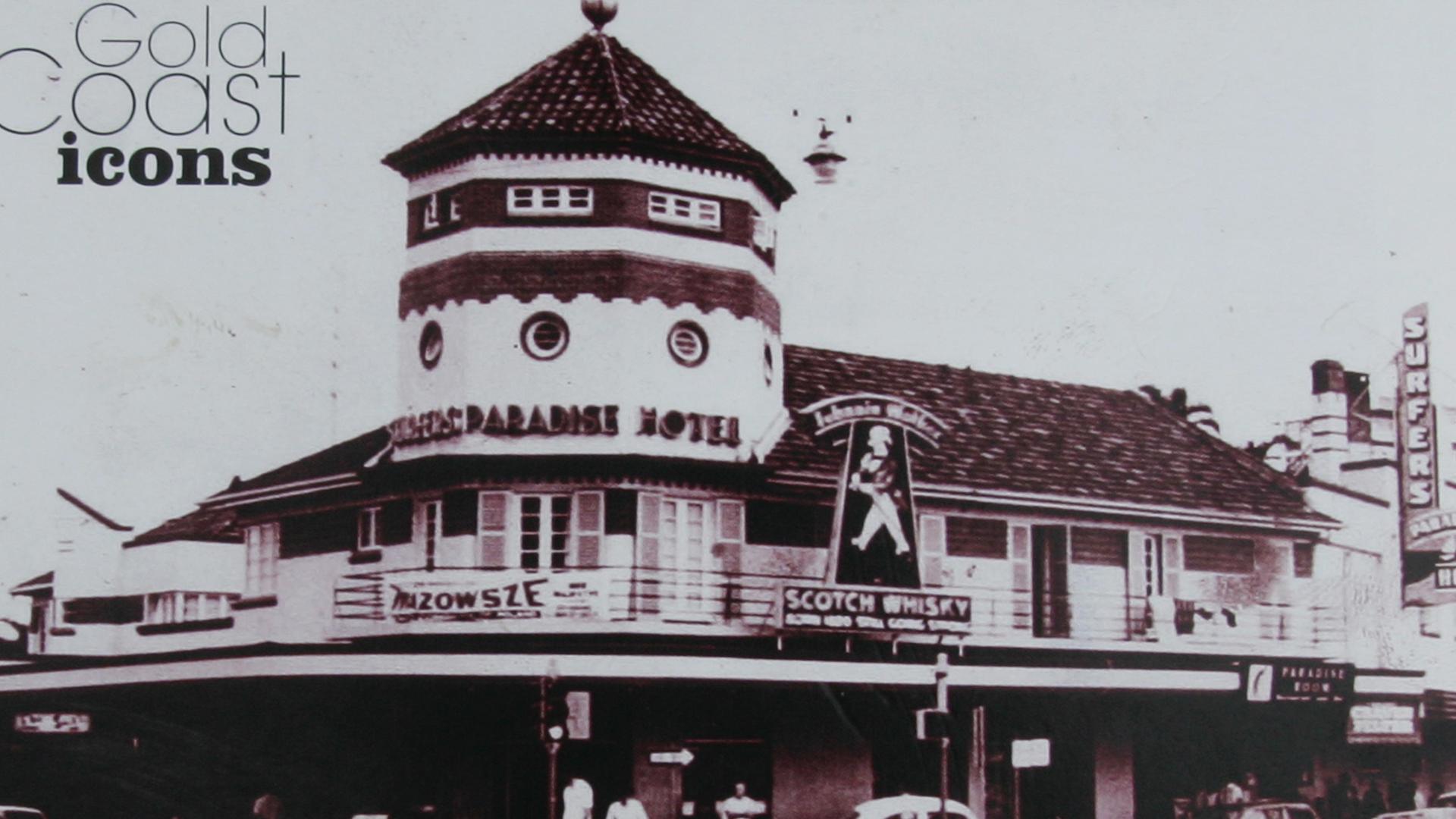
JAMES Freeman Cavill, famously known as Jim, arrived in what was then known as the south coast region in the early 1920s and had his eye on some property in the small beachside suburb known as Elston.
The Melbourne-born entrepreneur was an experienced publican, having run several businesses in Brisbane since the beginning of the 20th century, including Toowong’s Royal Exchange Hotel and Kedron Park Hotel.
In 1923 he gave it all up, transferred the licence to his son Richard and moved south, looking to make his fortune in the region which would one day become the Gold Coast.
That year he bought a 10ha plot in what is now the heart of Surfers Paradise and some of the city’s most valuable land.
That property, near the site of the former Main Beach Hotel, was considered a prudent investment and Cavill mulled his opportunities before deciding to return to being a publican.
Within two years of his purchase he opened the iconic Surfers Paradise Hotel to coincide with the 1925 opening of a bridge across the Nerang River. The 1.6ha hotel complex included gardens and a zoo, and became a popular location.
Cavill soon got a financial boost when he sold off much of his land for subdivision.

The zoo became a major tourist attraction through the 1930s and 1940s, while the hotel was soon so famous its name became synonymous with the area. In 1929 the local surf club bore the Surfers Paradise name, as did a local progress association.
In 1933, the suburb of Elston was renamed Surfers Paradise after Cavill and others lobbied the government.
The original hotel burned to the ground in 1936 and a new one was built, which stood on the corner of Surfers Paradise Blvd — now the Gold Coast Highway — and what became known as Cavill Ave. It was known for its ground-level Birdwatcher’s Bar, where drinkers could keep an eye on pedestrians in the busy tourist hub and its beer garden.
Jim died in 1952 at the age of 90 but his hotel had already gained iconic status and continued to operate until 1981, when it was demolished to make way for the Paradise Centre.
World War II and the arrival of the American influence
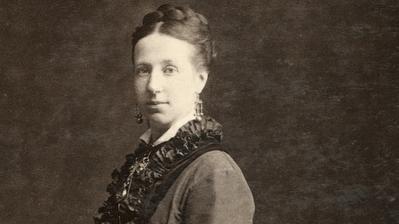
THE Gold Coast got its first taste of US culture in the 1800s when Lady Lucinda Musgrave, the American-born wife of the state’s then-governor, Sir Anthony Musgrave popularised the idea of holidaying at the Beach.
But the major US influence came during World War II when a large number of Americans came to the city.
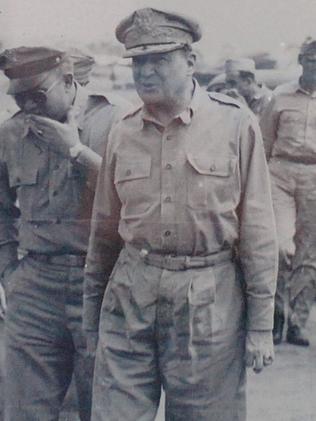
During the war, US soldiers under General Douglas MacArthur spent time on R and R on the Gold Coast, as well as those stationed in camps across the region, sparking a local interest in jazz and African-American culture.
This continued throughout the late 20th century as the buildings of Miami Florida and its canal estates proved hugely influential in the creation of the Coast’s own towers in the 1980s.
The history of the US connection to the Gold Coast is currently the subject of a study by Gold Coast City Gallery curator Virginia Rigney
Ms Rigney was one of four recipients of the Queensland-Smithsonian Fellowship program which gives researchers the chance to collaborate with the Smithsonian Institution.
She arrived there this week.
During her time in Washington DC, she plans to research the early connections between the historic south coast region, including the gazetting of Miami in 1924, something she said was inspired by the US city.
Ms Rigney told the Bulletin in September that World War II had a profound impact on the city.
“Immediately after the war you get the signing of the ANZUS Alliance at a time when building restrictions were lifted and the modern city began to take shape and we saw this come through in the strip city form, beach shacks, motels and fashion,” she said.
“We fell out of love with the US after the Vietnam War and began looking to Asia but in the 1980s it bounced back with the increasing development of the canal estates and the Miami Florida inspired high-rises.”
Lennons, Broadbeach

BROADBEACH had just five recorded residents by the end of the 1940s but came to the attention of the Lennons hotel group which in 1953 bought land formerly occupied by a sand mine.
The hotel was designed by Dr Karl Langar and one poolside attraction was a seal fountain created by Brisbane sculptor Len Shillam. The hotel was just five storeys high but was the Coast’s tallest building on completion in 1956.
The hotel was not considered a financial success and it closed and was demolished in 1987.
The Oasis opened two years later. The seal sculpture now sits at the entrance of the convention centre, not far from its first home.
It helped set the stage for the tower hotels of the modern Gold Coast.
Sundale and the shopping centres
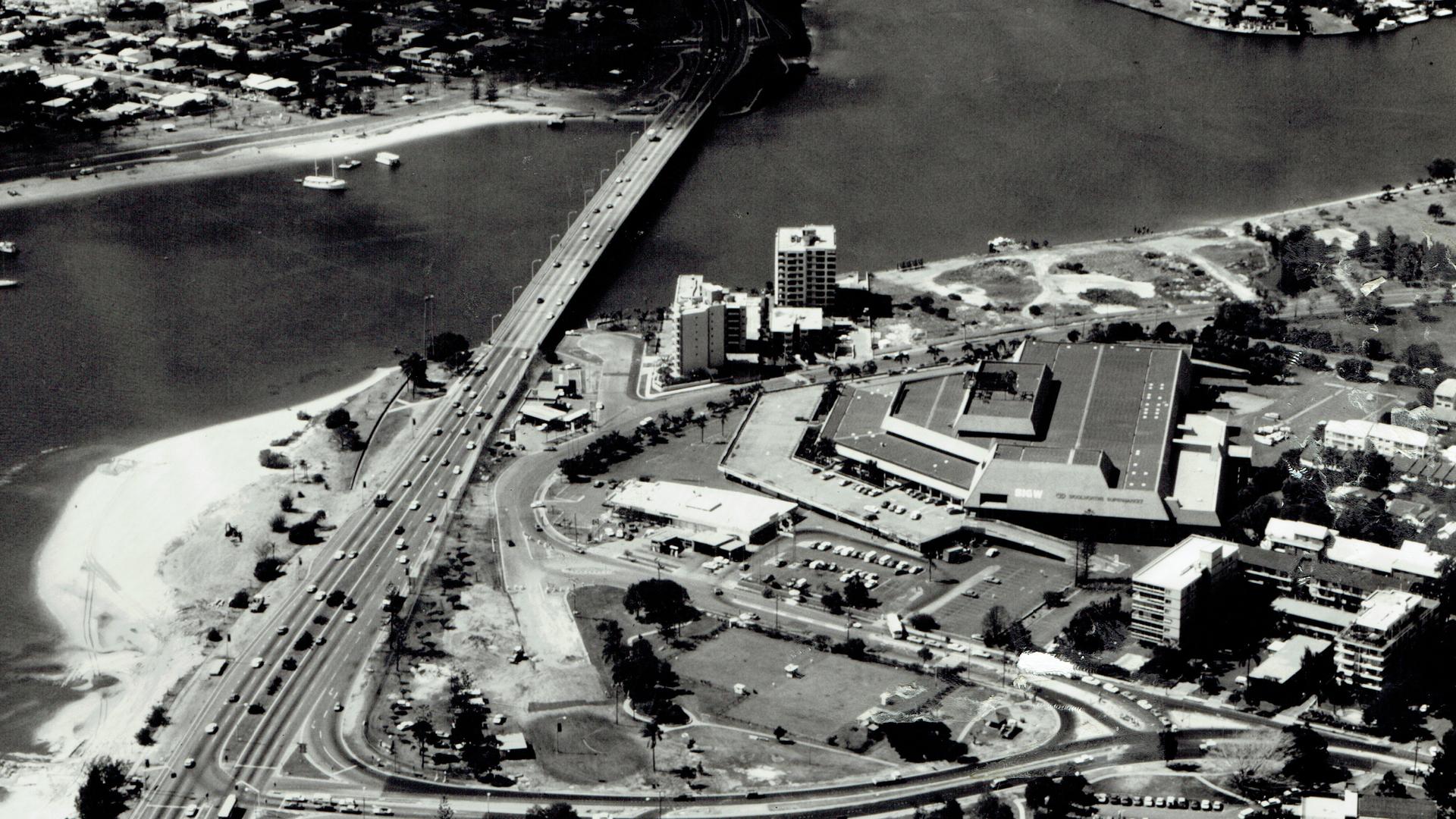
THE grandfather of shopping on the Gold Coast, Sundale Shopping Centre was built on the banks of the Nerang River in late 1968.
It featured everything from a Big W, a Woolworths and a cinema as well as a centre stage for fashion parades.
Among its most interesting features was a radio booth for station 4GG.
Sundale was a popular location throughout its heyday of the 1970s and early 1980s when it hosted live performances by Graham Kennedy, Bryan Brown, Lucky Grills and the cast of The Sullivans.
It began the Gold Coast’s shopping centre revolution and was joined in the 1970s by Pacific Fair, the Scarborough Fair/Australia Fair complex in the 1980s and Robina Town Centre in the 1990s.
Scarborough Fair opened in 1983 in what is now called Australia Fair Metro, its western wing.
It had just 40 shops including a Franklins and toy shop, with action figures from that year’s cinematic release of Star Wars Episode VI: Return of the Jedi.
In 1984, the complex expanded to the eastern side of Scarborough St with its now famous tower.
It doubled in size in 1989, forcing the demolition of houses and historic Pacific Hotel.
The expansion took the centre to the new Nerang St Mall.
Renamed Australia Fair, the centre’s high-end facilities led to the demise of the ageing Sundale Shopping Centre in 1990.
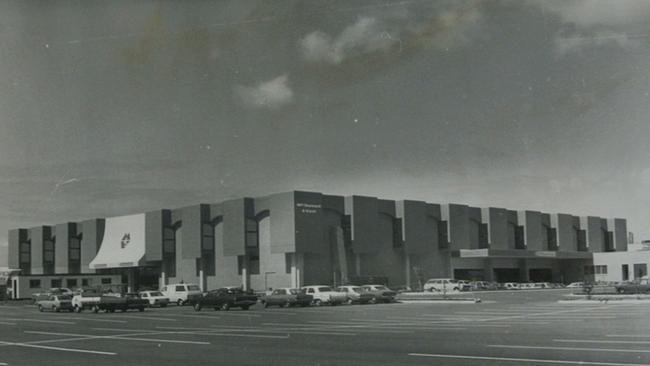


Add your comment to this story
To join the conversation, please log in. Don't have an account? Register
Join the conversation, you are commenting as Logout
OPINION: How GC can ‘maximise every opportunity’ ahead of 2032
The Gold Coast must capitalise on early investments in public transport, community venues, new tourism experiences, enhanced tertiary education and leading-edge technology, writes Tom Tate
‘Golden opportunity’: Why this is our most important two years
The Gold Coast faces its most important two years this century - and must extend light rail south of Burleigh and clarify its identity before the 2032 Games, a leading demographer says.